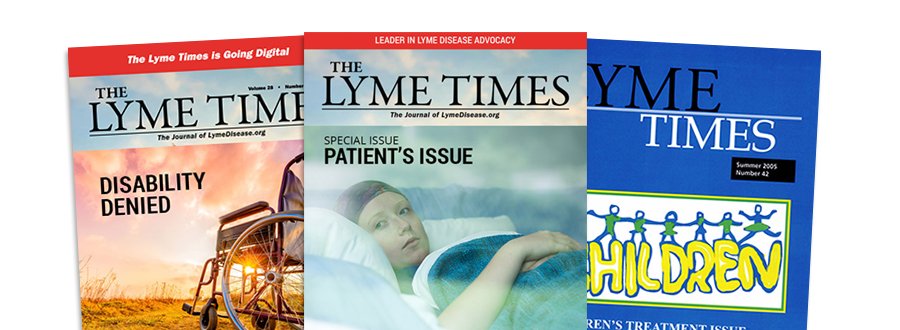- Home
- Find A Physician
- FIND A PHYSICIAN
- LymeTimes
- Current Issue
- Archives
- FEATURED LYMEDISEASE.ORG ISSUES
- Resources
- LYME LITERATE PHYSICIAN VIDEOS
- Physicians
- Members
- About Us
- Resources
O ne of the thorniest issues in Lyme disease has to do with the use of antibiotics. According to the Infectious Diseases Society of America (IDSA) and Centers for Disease Control and Prevention, 2-4 weeks of antibiotic treatment is more than enough to knock out the illness.
Here’s the problem with that. Every year, tens of thousands of people who take that prescribed short course of treatment remain ill. This happens to some of those diagnosed early, and it happens more to those whose diagnosis is delayed. But the IDSA and CDC recommend no further treatment for them. They just say, “Don’t take any more antibiotics.”
Patients who still hope to recover their health often find their way to doctors willing to prescribe longer courses of antibiotics for Lyme disease. And as a result, some people get much better. Unfortunately, however, not everybody.
This is one of the questions we have sought to answer through our MyLymeData patient registry: Why do some people improve substantially with antibiotic treatment, while others do not?
Our recently published peer-reviewed study of over 2,000 participants from MyLymeData begins to answer those questions.
How do patients respond to treatment?
We looked at patients with chronic Lyme disease—those who remained ill for six or more months following treatment with antibiotics for Lyme disease (Shor 2019). The first thing we did was identify different patients as well, high responders, low responders, or non-responders. Well patients responded positively to a survey question asking if they were well or remained ill. Those who remained ill were asked whether their condition had changed as a result of treatment. Those who said they were unchanged or worse (41%) were categorized as non-responders. Patients who said that they were better or worse following treatment, were asked how much better or worse. Those who had improved substantially (moderate to a very great deal of improvement) were deemed high responders…..Join or login below to continue reading.
You must be a LymeDisease.org member to access this content.





























